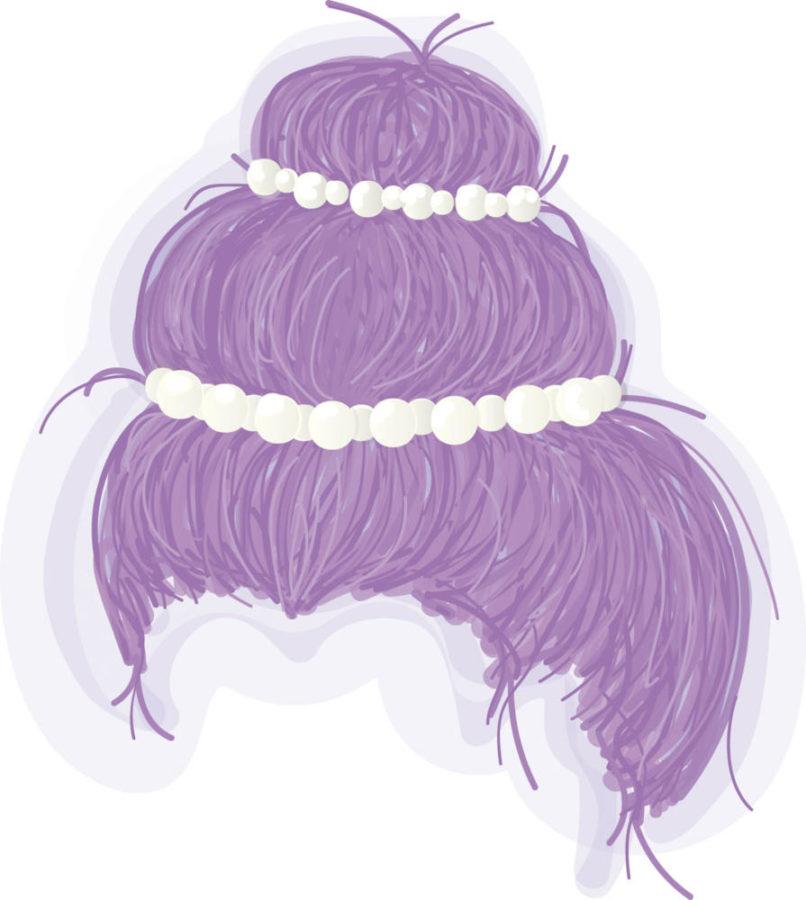Pitt’s production of “Marie Antoinette” has everything needed to recall the history of its title character — chandeliers, a guillotine and plenty of wigs.
But make no mistake — this is not a historical play, but a “meditation on excess,” as director Le’Mil Eiland notes in the program. After watching the performers and seeing actors in structured cotton candy-colored versions of 18th-century dresses, with televisions on the walls and a catwalk, I couldn’t help but agree.
Pitt’s production of the play, although entertaining, it is not meant to entertain — instead, it is meant to create a dialogue with history using symbols and added elements such as music and media.
Written by David Adjmi and first performed at the Yale Repertory Theatre in 2012, “Marie Antoinette” is a retelling of the story of the last queen of France, who was ultimately convicted of high treason and executed by guillotine in 1793. It follows her marriage to King Louis XVI and her desire to produce an heir, as well as the events leading up to the fall of the French monarchy.
The play attributes her downfall to the vain, monarchical society that valued extravagance over the needs of the common people using an avant-garde design to bring the 18th century to the aughts.
This particular production brings in parallels to modern government before the show even begins. Photos of famous French paintings and monarchical portraits — graffitied with words like “fake news” and “make France great again” — line the way to the seats. A museum label explaining the context of the picture and the meaning behind the words supplements each photo, helping the audience make a connection between the two. Videos of champagne being poured into a glass, perfume spraying and high heel-clad feet walking show on four television screens, foreshadowing the decadence of what is to come onstage.
In the show, the French monarchy’s use of money for their own self-interests parallels today, when lobbying groups affect how our congresspeople vote despite their constituents’ countless calls to their offices.
Music is a crucial element of the show from the beginning. Sophomore cellist Annalise Shaffer joins junior Kayla Bradley, who plays Yolande De Polignac, to sing “I Did Something Bad” by Taylor Swift from her album, “Reputation.” The entire song foreshadows Antoinette’s view toward the public — her frivolity and overspending was misguided, but she had a good time doing it. French rap plays between scene changes and onstage costume changes, modernizing and energizing the breaks between scenes.
Costumes designed by KJ Gilmer and junior Sophie Rice, along with junior Kyle Huber’s hair and makeup, add to the artifice — the actors wear cotton candy-colored wigs, gaudy makeup, bright dresses, floral corsets paired with short cage skirts and high heels that would make skyscrapers jealous.
The acting is superb from all members of the cast — even the guards and the courtiers, who don’t speak for the first half of the show. Junior Alexis Primus gives a nuanced Antoinette, whose character growth is visible and moving. First year Adam Nie’s Louis XVI channels Tom Hulce’s childish, neurotic Amadeus in the 1984 film of the same name.
Running 110 minutes with a 15-minute intermission, “Marie Antoinette” is not for the antsy, and its avant-garde nature might overwhelm a lay viewer. But for the seasoned theatergoer, “Marie Antoinette” is a treat that will leave you thinking long after the guillotine falls and the lights come up.
Pitt’s version of the play runs from Feb. 15 to 25 at the Richard E. Rauh Studio Theatre. Tickets for the show can be purchased online or at the department of theatre arts box office on the 16th floor of the Cathedral.


